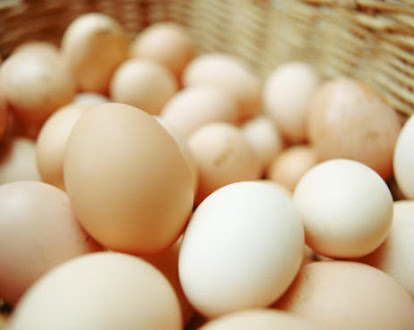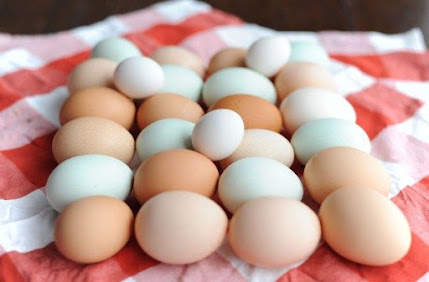Quarter 1 Lesson 3 "Types and Characteristics of Quality fresh eggs"
Types of eggs
Eggs are full of rich nutrients that are essential for health. When you talk about eggs used as foods, chicken eggs come to mind as these are the most commonly consumed eggs throughout the world. However in this lesson, not only are we tackling the chicken eggs, but also the other types of eggs as well.
Chicken Eggs (Standard chicken)
These are the most common and most widely consumed eggs of the world. The reason for it is that chickens are common than any other birds. The shell of the chicken eggs is mostly white, however, some breeds may also have slightly brown shells.
Below are the types of chicken eggs:
Standard Eggs
- These are the most common chicken eggs and are the regular eggs that are sold in the market. They are also known as commercially produced eggs, conventional eggs, battery farm eggs, or just "eggs."
Organic Eggs
- These are the pure, natural and healthy chicken eggs which are sold in the supermarket and are quiet expensive. The chickens that are bred for organic eggs are kept in farms where they can roam about freely and they are not given any sort of chemicals and artificial hormones. The taste of an organic egg is better than the standard egg. From heart, skin and eye health to a stronger immune system and more, organic eggs have a lot to offer! Organic eggs have higher levels of omega-3 fatty acids than non-organic eggs. These fats are known to prevent chronic disease and reduce inflammation while assisting in brain function and growth.
Free Range Eggs
- These eggs are healthier than the standard eggs, but less healthy as compared to organic eggs. Chickens are free to move around a farm and fed almost the same with standard egg. The maximum outdoor stocking density for free range egg farming is 10,000 hens per hectare of land or one hen per square meter,
Bantam Eggs
- These eggs are small and tasty and usually have a white shell. Bantams are smaller variety of a chicken.
Duck Eggs
- These are much larger than a hen's egg and have a stronger flavor. They are slightly higher in fat, protein, and cholesterol. Duck eggs can generally be used in cooking in the same ways as a chicken eggs, although there is a strong flavor. Duck eggs are typically larger than chicken eggs, they can also come in all sorts of colors varying mostly by breed. A duck yolk is much bigger than a chicken's yolk.
Goose Eggs
Quail Eggs
- These are tiny, with pretty speckled shell and has a delicate flavor. Quail eggs are really special as not only they taste good but they have a large quantity of proteins and vitamins and contain only 14% calories. Quail eggs are rich in nutrients and full of health-promoting antioxidants that may help reverse cellular damage and treat allergy symptoms. It also contains antioxidants that may help treat symptoms allergic rhinitis and eosinophilic esophagitis.
Characteristics of Quality Fresh Eggs
All eggs sold at grocery stores must meet strict standards. Only those with high quality reach the consumers. Eggs must be checked for interior quality by candling, a process where in eggs are passed over a strong light to show the shell of interior. The following are the characteristics of fresh eggs.
- It should have a rough, chalky and unbroken shell.
- It should sink in water.
- It should have a round and firm yolk.
- It should have a light and thick white part.
- It has to have a well centered yolk.
Egg Freshness
- If it sinks and lies flat on the bottom, it's fresh.
- If the egg begins to float, it would be a week old.
- If the egg stands upright at the bottom of the glass, it should be 3 weeks old.
- An egg that floats to the surface should not be used.
Market forms of Eggs
Fresh Eggs
These are most often used for normal cooking recipes.
Frozen Eggs
These are usually made form high quality fresh eggs and are excellent for scrambled eggs, omelettes, and french toast.
Dried Eggs
Dried eggs (powdered) are used primarily in baking. It reduced weight per volume of the whole egg equivalent and the shelf life of the food you are going to make.
Storing Eggs
Tips in Storing:
- Eggs should be stored in a cool and clean place.
- Ideal storage for an egg is away from humidity.
- Eggs required for cooking should be allowed to slowly reach temperature of 20 degree celsius.










Comments
Post a Comment